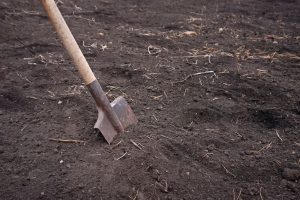
Starting a digging or excavation project is not legally possible is the site is not marked by locating specialists. This rule goes for pubic and residential properties and it is necessary for avoiding damage to underground utilities.
Make no mistake: a homeowner who digs a 50 cm trench for installing a fence or even a smaller hole for a new postbox can make the same damage as a backhoe that performs an extensive excavation project. Underground utilities include water and gas pipes, sewers, telecommunication lines, cables, wires etc. and damaging some of these can have severe and even life threatening consequences, not to mention that the damage may also isolate an entire community that depends on those facilities or create an environmental disaster.
As a general rule, if you plan to dig more than 15″ deep, you must first call for an underground location service.
What is an underground wire location service?
Underground wires are generally related to electrical transmission and they may be a part of the public network, as well as private.
If you call before you dig Denver area and others dialing 811 (a number that you can use anywhere you are, in the US), you will be visited by wire locators sent by the power company that has buried utilities on your property. Their services are free. On the other hand, if you want to locate private wires, installed for example for bringing electricity to a garage, you must hire a private wire location service, because public locators do not deal with private utilities.
There are many underground utility locating companies specialized on wire location. Their services are not free, but they cost significantly lower than what you would be charged for damaging utilities and generating a disaster.
How does underground wire location works?
The reason to locate the buried wires is not exclusively related to digging and excavating safely, but also to new wire installation or repairs. Wire location is always performed by specialists who use location plans and maps, as well as special detectors consisting in a transmitter (that sends an electrical signal to the cable being tracked) and a receiver (that picks up that signal, while the operator traces its path and identifies the location of the cable).
Cables have different types of conductors, but the transmitter can be set on different frequencies that will ease the location process. Specialists start with the lowest frequencies and increase them only if they do not work, because they typically stay on the conductor better.
There are different methods to send signals to the cables, the most common being inductive coupling, direct connect and general induction.
Power lines and communication cables can be located with passive location methods too (such as magnetometry or ground penetrating radar), considering that they already have an AC signal on them. However, in some of the cases, the signal strength is weak, therefore active detection is more reliable and time saving.
Regardless the reason for starting a digging/ excavating project, underground utility location services must be always the first thing to consider.

